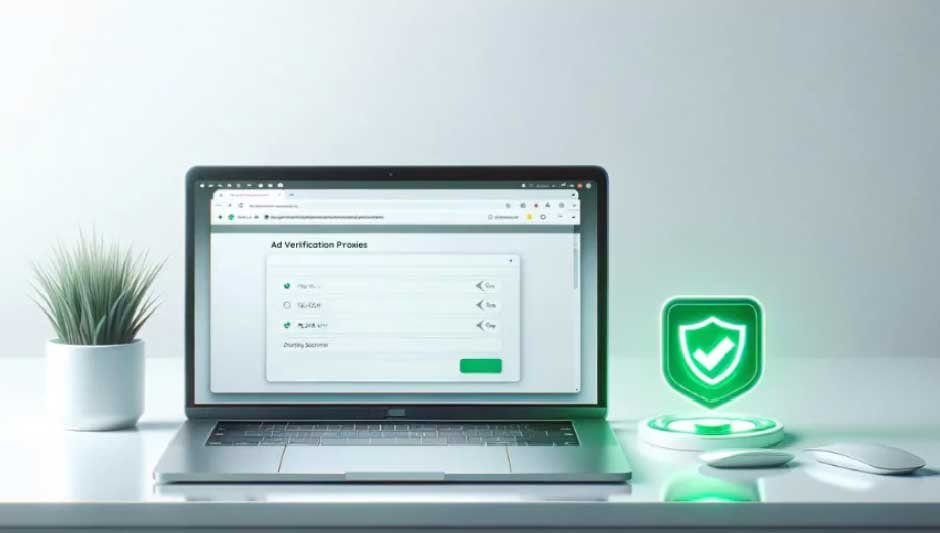Skip to the good bit
ToggleYou’ve set up a geo-targeted ad campaign, ready to verify everything’s working across different regions. But when your verification tool runs, things start falling apart—ads don’t show up, IPs get flagged, and your data looks nothing like what your audience actually sees. Sound familiar?
That’s because most proxies just don’t cut it for ad verification. They’re either too detectable or too unstable. To get reliable results, you need a smarter setup—one built for real-world accuracy. More and more marketers are turning to solutions where they buy rotating proxy unlimited bandwidth to avoid detection and keep verification clean, fast, and consistent.
Let’s talk about why proxy failures happen so often and what really works.
What Makes Proxies Visible to Ad Platforms
It’s tough to fool today’s ad platforms. They’ve built powerful ways to detect when traffic isn’t from a human. They look for:
IP reputation: Ad platforms check an IP’s history. IPs from real users or trusted networks pass verification more easily.
Connection type: Traffic from mobile or home networks better resembles actual user behavior, allowing for fewer chances to get flagged for not simulating real traffic user behavior on a platform.
Location mismatch: If your proxy says you’re in one city, but your ad campaign is for another, that’s a big problem.
Behavioral patterns: Bots act differently than humans. Platforms can detect unusual clicks, very short visits, and other odd behaviors.
What does this mean for you? Even if your proxy looks fine, it could still be failing silently, providing bad or no data.
What Happens When Your Proxy Gets Detected
You won’t always see detection happening clearly. It can be quiet and tricky. You’ll think the ad’s verified, but:
- The ad shown is a placeholder
- Pages don’t fully load
- Tracking pixels don’t fire
- Or your request gets ignored altogether
So even though it looks like your verification went through, you’re not seeing what real users are seeing—and that’s a serious problem when you’re relying on data to make big ad spend decisions.
Common Proxy Mistakes That Ruin Verification Results
If you want your ad verification to be trusted, your proxy traffic has to look just like a regular person’s browsing. This is where 4G mobile proxy solutions come in.
4G mobile proxies make use of actual mobile network connections from telecom carriers. These IPs rotate frequently, appear totally natural to ad platforms, and are nearly indistinguishable from real mobile users.
That’s exactly what you want.
Trusted by platforms: Mobile IPs are less likely to be flagged.
Real user behavior: Mimics organic traffic.
True geo-location: Perfect for testing region-specific campaigns.
When you’re testing across mobile-heavy platforms like Instagram or Facebook, using a 4G mobile proxy doesn’t just improve verification accuracy—it ensures your ads are behaving the way they should for real users.
Why Unlimited Bandwidth and IP Rotation Matter
Let’s say you’re running multi-region, multi-platform ad campaigns. You need to verify them across several devices, locations, and creatives. That’s a lot of traffic and load.
This is where having the ability to buy a rotating proxy with unlimited bandwidth makes a huge difference.
Here’s why:
- Unlimited bandwidth ensures smooth, uninterrupted access—no bottlenecks when loading heavy pages or video ads.
- Smart IP rotation keeps each request fresh, so you don’t trigger detection by reusing the same IPs.
- Session control lets you mimic real user engagement without timeouts or broken pages.
- The ability to buy rotating proxy unlimited bandwidth is crucial if you want to scale ad verification without sacrificing accuracy or risking detection.
What Causes Even Good Proxies to Fail?
Not all failures are due to detection. Sometimes it’s just poor infrastructure. Here are issues to note:
Small IP pools: Reused IPs get flagged faster.
Unstable connections: Dropped requests can lead to false negatives.
Incorrect configuration: A mobile proxy masquerading as a desktop computer? To advertising platforms, that is a warning sign.
Latency or load lag: Especially harmful for video ad verification.
Even with a decent provider, if you’re not getting the speed, rotation, or location accuracy you need, your data won’t reflect the real user experience.
Ad Fraud Makes Things Even More Complicated
Ad fraud isn’t just bots clicking ads—it’s also fake impressions, spoofed locations, and manipulation at scale. Verification is your shield, but only if it’s reliable.
If your proxy is already being flagged or limited, it won’t protect you from fraud—it might even feed you bad data.
That’s why relying on trusted mobile or residential IPs is so important. They don’t just get through detection—they help uncover fraud by mirroring what legitimate users see.
What a High-Performance Proxy Setup Should Include
When you’re choosing a proxy solution for ad verification, these are the essentials:
- Real mobile or residential IPs: Trusted and less likely to get blocked
- Unlimited bandwidth: So you don’t hit traffic caps during verification
- Rotating IPs: Makes your online activity harder to pinpoint.
- Geo-targeting support: Allows precise location testing
- Customizable session settings: Useful for testing both quick-load and long-session ads
These features create a stable, invisible verification setup, turning your proxy into a reliable tool, not a risk.
Final Thoughts
Ad verification needs to be handled carefully, not left to luck. Your clients and campaigns depend on accurate visibility, and if your proxies are being detected or delivering bad data, you’re making decisions in the dark.
That’s why more marketers and agencies are switching to 4G mobile proxy systems backed by unlimited rotating bandwidth. More than just speed and scale, but about accuracy, trust, and making sure your money is used exactly as planned.
Prior to the launch of your next campaign, consider:
Is your proxy setup built for today’s ad ecosystem, or is it holding you back?







